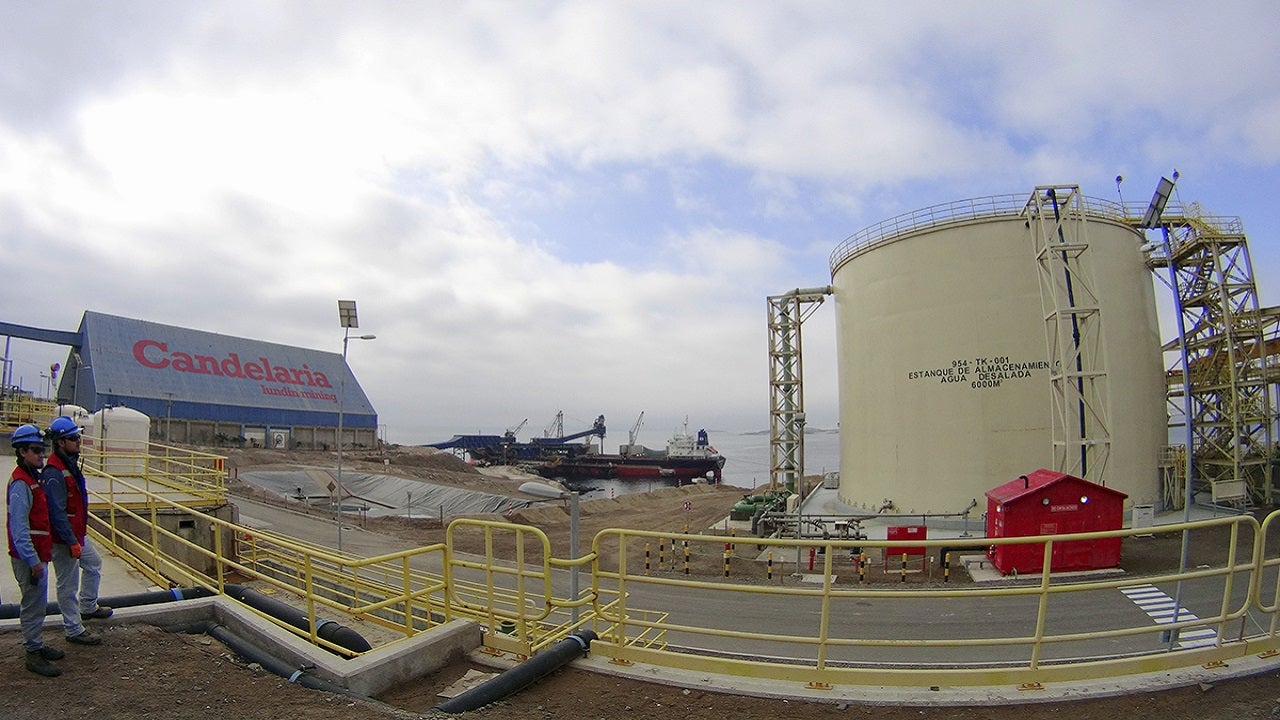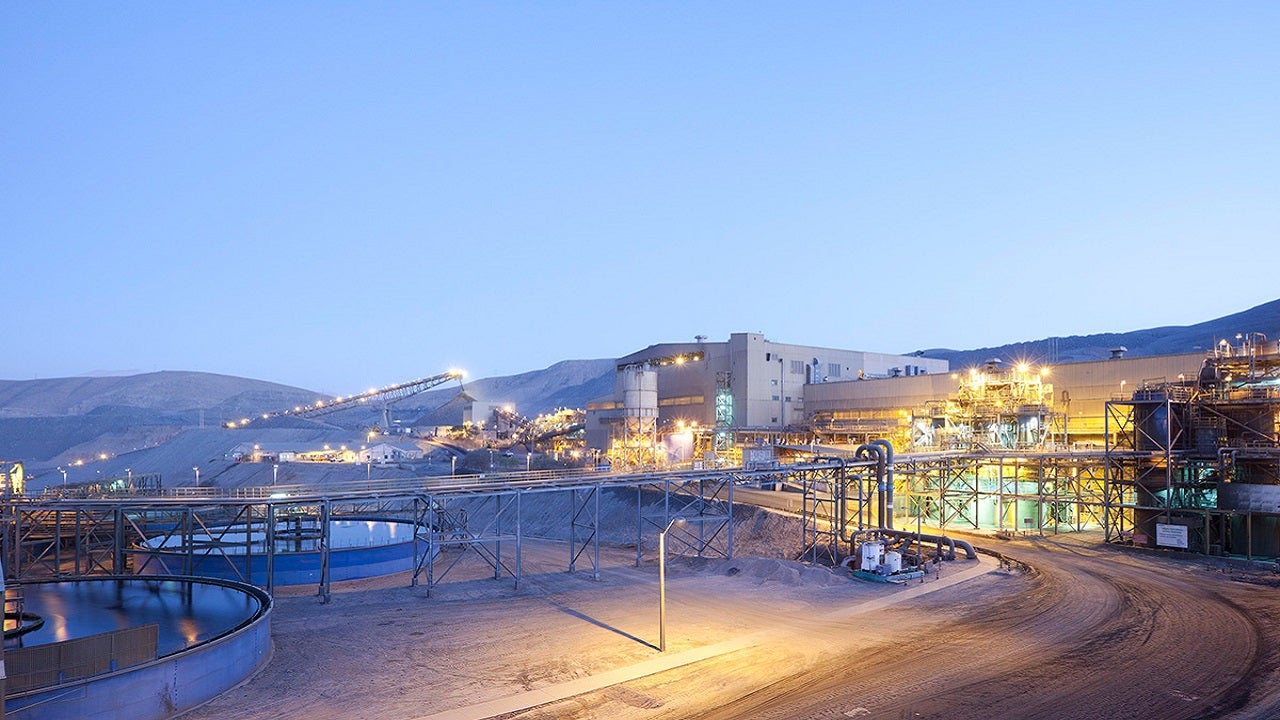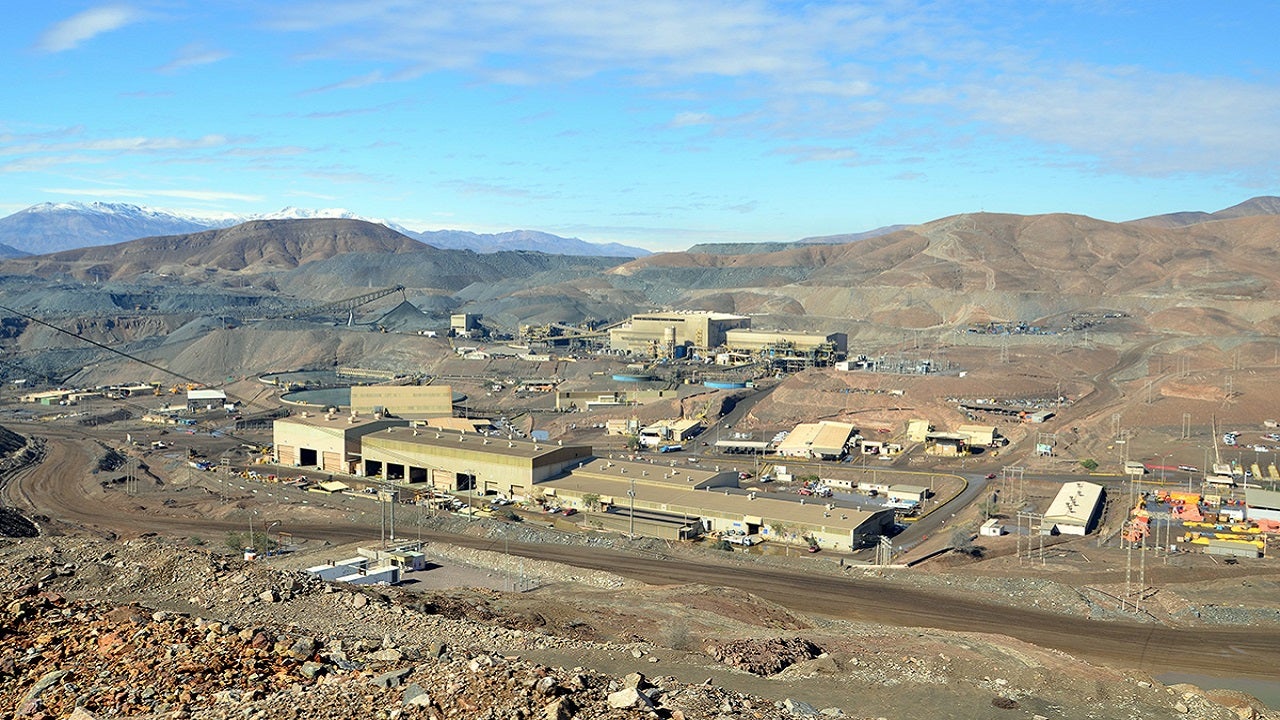The Candelaria mining complex includes the Candelaria and Ojos del Salado copper mining operations in the Atacama region, Chile. The mines produce copper concentrates from open-pit and underground mines.
The mining complex is indirectly owned by Lundin Mining with an 80% interest while Sumitomo holds the remaining 20%.
Lundin Mining acquired its stake in the complex from Freeport-McMoRan in 2014. Sumitomo bought its share from Phelps Dodge Corporation in 2005.
The Candelaria sulphide deposit was discovered in 1987. Construction at the mine began in 1992 and production was commenced in 1995.
Operations at the Candelaria copper mine were suspended in October 2020 following a strike by workers over wages. Efforts are currently on to strike a deal with the working unions and restart production.
Candelaria mining complex location
The Candelaria and Ojos del Salado mines are located adjacent to each other in Region III of the Atacama region.
The copper mines are situated at an elevation of approximately 650m above sea level, 20km away from the city of Copiapó. The complex is easily accessible by a public road system.
Geology
The Candelaria mining complex is characterised by iron oxide copper-gold (IOCG) mineralisation. The deposit is hosted in volcanic rocks of the Punta del Cobre formation.
The polymetallic sulphide mineralisation can exist as veins, replacement mantos, hydrothermal breccias, and calcic skarns inside andesite and tuff units.
Candelaria copper mining complex reserves
The proven and probable mineral reserves of the Candelaria mining complex are estimated to be 5.5 million tonnes (Mt) of copper, 3.23Mt of zinc, 108,000t of nickel, 977,000t of lead, and 6.8 million ounces (Moz) of gold, as of June 2019.
Mining at Candelaria mining complex
The life-of-mine (LOM) plan for the Candelaria open-pit mine involves supplying ore from the Candelaria and Española open-pits (located south of the Candelaria pit) to the Candelaria processing plant. The surface work-in-progress stockpiles are fed to the plant after the depletion of mineral reserves from the open pits.
The Candelaria open-pit mine has a mining rate of approximately 310,000t a day over the next ten years. The pit was designed for phased mine development, with five phases of development remaining in the LOM plan.
The operation involves a mining fleet of seven electric shovels, eight production drills, 43 haulage trucks, and support equipment. A major open-pit mine equipment re-capitalisation programme was substantially completed by the end of 2019. It involved the replacement of the existing rope shovels with new hydraulic units, as well as upgrading the majority of the truck fleet to the latest generation Cat 793F trucks.
Certain upgrades and replacements were also undertaken at the mine’s service and ancillary vehicle fleet.
The underground mines, namely Candelaria underground (north and south sectors), Santos, and Alcaparrosa employ sub-level stoping mining method for ore extraction.
The stopes are drilled down from the sublevel drilling drifts as benches using down-the-hole holes, which are loaded and blasted in vertical slices made by slot blasting. The blasted ore falls to the bottom of the stope to be collected at the production level below.
A tophammer rig drills holes within the undercut to be loaded and blasted with the downholes. The mucked ore is dumped into 60t underground trucks and hauled to a surface stockpile for re-handling and processing.
The Candelaria underground operation will be ramped up to a steady-state of 14,000 tonnes per day (tpd) by 2021.
The current mine lives of the Candelaria underground, Santos, and Alcaparrosa mines are 19, ten, and nine years, respectively.
Processing at Candelaria mining complex
The Candelaria and Ojos del Salado mines operate their own processing plants. The Candelaria processing plant processes ore from the open-pit, as well as the three underground mines, with a nominal capacity of 75,000tpd.
It is a conventional plant with two parallel process lines for grinding and flotation. It receives reclaimed process water from a conventional tailings dam. The bulk copper concentrates undergo common filtration before they are shipped. The run-of-mine ore is transferred by trucks to a primary gyratory crusher, whereas grinding is undertaken in a multi-stage closed circuit using semi-autogenous grinding (SAG) mills, ball mills, and pebble crushing.
A multi-stage flotation circuit produces copper concentrates with the use of mechanical cells, regrind mills and column cells. The final flotation copper concentrate with gold and silver by-product metals undergoes thickening and filtration for on-site storage.
With a 3,800tpd design capacity, the Pedro Aguirre Cerda (PAC) processing plant processes ore from the Santos underground mine. It includes a closed-circuit crushing plant with a primary jaw crusher, a secondary cone crusher, and two tertiary cone crushers. The flotation plant employs conventional multi-stage, mechanical, flotation cells, column cells, and regrind milling for the final stage of concentrate cleaning.
The final concentrate undergoes thickening and filtration using a ceramic disc filter, while the final flotation tailings are pumped to the main Candelaria tailings storage facility.
Copper concentrates containing precious metals are either sold to local smelters or trucked to the Punta Padrones port for overseas export.
Candelaria mining complex infrastructure
The Candelaria mining complex receives electrical supply under long-term contracts with a local energy company.
Main water supply is from a desalination plant located adjacent to the Punta Padrones port facility, while local treated sewage water is also used by the mines.
The Los Diques tailings storage facility was constructed in 2018 to replace the original Candelaria tailings storage facility.
The Candelaria infrastructure includes ancillary mine services, administrative buildings, and road accesses. A 40km-long pipeline from the Bodega pump station to the Candelaria plant site is also part of the infrastructure.
Contractors involved
AES Gener has been providing electricity to the mining complex since July 2012. SG Drill was contracted for the completion of downhole surveys while SRK Consulting prepared the technical report for the project in 2018.
In June 2018, Jacobs Engineering Group was selected to provide design, engineering, procurement and construction management (EPCM) services for the Candelaria mill optimisation project (CMOP).
Züblin International secured a contract renewal for the integral development and exploitation of the underground mine, in February 2019.






